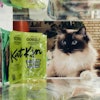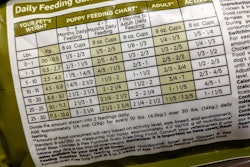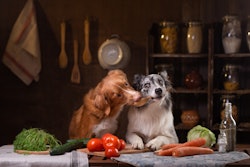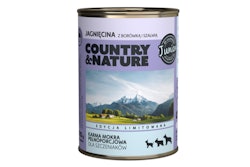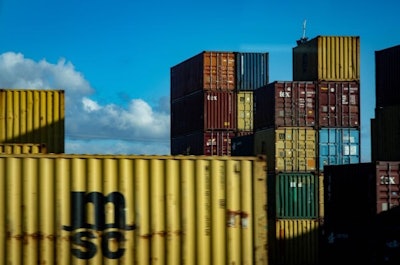
The weak ruble, coupled with competitive production costs and possible state aid, could pave the way for Russian pet food exports to the emerging countries of Asia-Pacific, Middle East and Africa, though there is a lot of technical work ahead for export supplies to take off. “Undoubtedly, Russian pet food companies currently have enormous potential to expand export,” said Kirill Dmitriev, president of the Russian National Association of Zoo Industry, admitting that a downward rally of the Russian ruble is one of the critical factors making the deliveries to foreign customers lucrative for Russian businesses.
The Russian ruble has weakened by 26% this year as a result of a collapse in export revenues and growing government spending, making it the third worst-performing global currency this year. During the past 12 months, the ruble lost nearly half its value against the hard currency. In response, the Russian Central Bank had to jack up the key interest rate from 8.5% to 15% in several rounds during the past several months.
Compared with other countries, the Russian economy has access to extremely cheap energy and fuel and a relatively inexpensive but experienced labor force, Dmitriev said.
The ruble devaluation is unlikely to move the needle too much for the Russian pet food exporters, said Yulia Dolzhenkova, development director of Zooinform, a Moscow-based pet industry media. “I don’t think the Russian ruble’s weakening is going to make the production cheaper. In fact, this factor only drives operational costs up,” Dolzhenkova said. It would be wrong to expect that cheap Russian pet food will be more popular in foreign markets, thanks to higher affordability. “High quality, premium and superpremium pet food do have export opportunities, but these products are not going to be cheap, I believe.”
Spotlight on far-abroad pet food markets
Russian pet food manufacturers have already gained a foothold in the countries of the post-Soviet space. Within the Eurasia Union, no tangible changes are expected in the coming years, according to Dmitriev. Russian pet food has enjoyed the benefits of free movement of goods within the trade block, and these markets are already well-explored by Russian businesses.
Countries farther abroad potentially are of greater interest to Russian pet food exporters, Dmitriev said, explaining that the key brake on the wheel of export is a lack of international recognition of Russian veterinary certificates among its trade partners. “Russian pet food manufacturers regularly appeal to our association asking to talk Rosselhoznadzor [the Russian veterinary body] into speeding up negotiations on this issue with some foreign countries,” Dmitriev said. “In fact, this [lack of agreed veterinary certificates] is the main obstacle for the Russian pet food export.”
The pool of countries to which Russian pet food businesses can export their products is limited at the moment, Dolzhenkova agreed. Certain potential for Russian exporters is seen in Middle Asia, in neighboring former USSR countries, in Middle East and African countries, especially as the Russian government forges stronger political ties with the continent, she added.
However, export to some neighbors can be challenging. Even in Belarus and Kazakhstan, both of which are members of the Eurasia Economic Union, Russian pet food brands are currently locked into a fierce tussle with local and imported pet foods, she added. Export prospects in the Chinese direction are vague, Dolzhenkova said.
Russian authorities are now making titanic efforts to get a green light for Russian pet food exports to new markets, but this work a priori is never fast, Dmitriev said.
The Russian side is not targeting the European Union, the U.S. or other Western countries, not due to sanctions but because of excessive rules regulating pet food imports in these markets. “You need to go through seven rounds of hell to get permission to export anything to the U.S., and this was always like that. It doesn't have anything to do with the sanctions,” Dmitriev explained.
Homework to be done
On the downside, Russian pet food manufacturers must compete in targeted countries with Western suppliers, which have access to far more state aid than Russian businesses on their home grounds. The Russian government provides substantial aid to spur agricultural and food exports. For instance, the authorities have recently approved a 100% subsidy on logistics costs associated with the delivery of dairy products to foreign customers. Russian agricultural firms are also eligible for soft loans and reimbursement of capital investments.
Regrettably, pet food companies in Russia are yet to be recognized as a branch of agriculture, which would make the industry eligible for ample state support, according to Dmitriev. “We have raised this issue repeatedly with the Russian regulators, and every time, heard that we have nothing to do with agriculture,” Dmitriev said, emphasizing that despite this, pet food production in the country is supervised by the Agricultural Ministry.
To break out to the foreign markets, Russian pet food companies first need to ensure their products have stable quality, Dolzhenkova pointed out. Some Russian pet food brands are managing this and are successfully exporting, while many others are still struggling with stability. To some extent, this problem stems from a lack of some critical imported pet food components, without which maintaining consistent quality is challenging, Dolzhenkova added.
